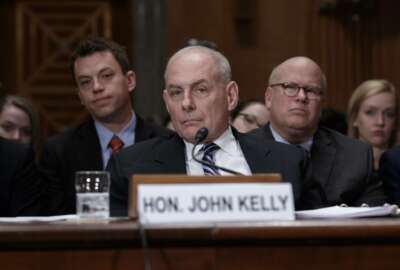
SEC sees transition as opportunity to involve employees in engagement improvements
Employee engagement efforts at the Securities and Exchange Commission have taken off in the past two years, Lacey Dingman, SEC chief human capital officer, said...
The Securities and Exchange Commission sees transition years like this one as an opportunity to capitalize on recent improvements it’s made on employee engagement.
The SEC jumped from 27th to sixth on the Best Places to Work rankings over the past five years. The Partnership for Public Service in 2016 recognized SEC as the “most improved” among mid-sized agencies. It raised its index score by 7.5 points in 2016.
“We definitely are not going to take our eye off the ball,” Lacey Dingman, chief human capital officer and human resources director for SEC, said in an interview with Federal News Radio. “That’s one of the things that we realized along the way that you just can’t do.”
SEC’s new chairman will begin his job soon. But even in the interim, the agency’s acting chairman spoke to employees at town hall meetings and reminded them that SEC has — and will continue — to focus on better training, communication and recognition of the workforce.
SEC employees told management they wanted to see agency communication and training opportunities improve. SEC has focused on those concerns for the past five years, but it’s been during the past two years that Dingman said she’s seen the agency’s efforts take off.
She said those programs, along with SEC’s “grassroots” reach to its employees will continue with the agency’s new leadership.
“We’re also going to be meeting with our incoming chairman to figure out how he’d like to tackle employee engagement because it’s a leadership at the top mentality, and we want to make sure that we align with his priorities,” Dingman said.
Like many agencies, SEC hasn’t always had the resources to spend on training programs for its employees. Instead, Dingman said the agency’s own subject matter experts teach many training and development courses. SEC also set aside space for a virtual training room, where its employees can take classes rather than having to travel for a program.
SEC also revitalized its alternative dispute resolution program, where a third-party can help employees and managers work through a problem together in a safe space.
Giving new life to that program has helped the agency rebuild trust with some of its employees, Dingman said. In addition, about 20 percent of the agency’s workforce has participated in a team-building workshop on SEC University.
“Management and the employees of that particular group [get] together, talk about particular issues or communication styles and depending on how many workshops they’ve done, it evolves from there,” she said. “It’s really driven by the employees and the managers and the issues that they’re facing, but it helps them think about how they work as a team and they can direct their efforts to get their responsibilities done.”
The agency also credits its success to the strong labor-management partnership it has with the National Treasury Employees Union.
SEC managers and NTEU organized committees in each division of the agency. Together, they held conversations with SEC employees and brought the results of the Office of Personnel Management’s Federal Employee Viewpoint Survey to those forums.
“[We] developed a process that we could all agree upon on how we were going to tackle the FEVS results,” Dingman said. “That has really born out in the fact that not only do we have a national labor management forum but we pushed small labor management groups into each of our divisions and offices so that there’s a collective effort across the agency, more of a grassroots [effort] you might say, in each division and office working on the issues that comes up to the national group. It’s because of that dialogue and because of that interaction model that the relationship has continued to improve.”
SEC acknowledged that the union is a representative of its employees, and NTEU can help make the agency’s managers aware of issues they might not otherwise learn about, Dingman said.
“Through the dialogue with them, we’ve also been able to help our employees understand that … what we’ve done and the fact that we’re going to take the results seriously,” she said. “That’s why it takes a couple years for it to really get to a good place, because you have to let the employees know that you are going to take it seriously, you are going to continue to work at this and that it’s going to take their involvement as well.”
A cohort of SES employees are also working on projects through the Partnership’s Excellence in Government Fellows project. Dingman said the plan is to integrate some of those projects with SEC’s engagement efforts in the next few months.
One project focuses on the communication challenges SEC has had in sharing information from the top of the organization down to individual employees.
Copyright © 2024 Federal News Network. All rights reserved. This website is not intended for users located within the European Economic Area.
Nicole Ogrysko is a reporter for Federal News Network focusing on the federal workforce and federal pay and benefits.
Follow @nogryskoWFED






